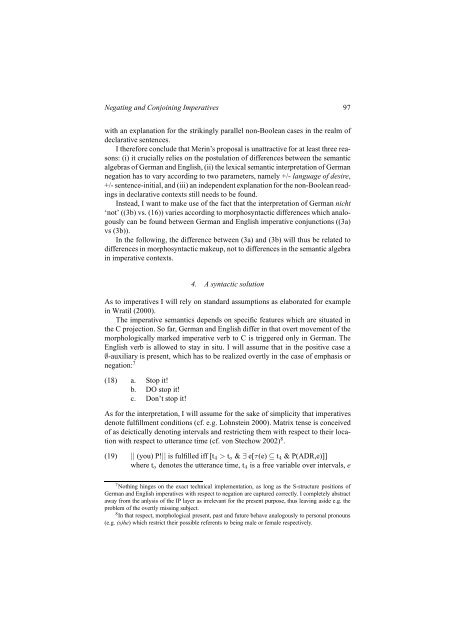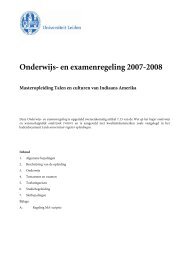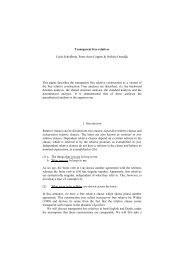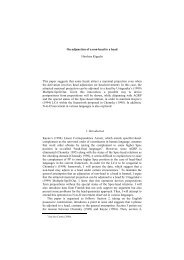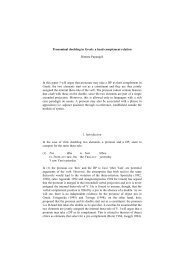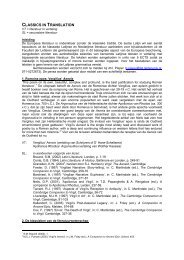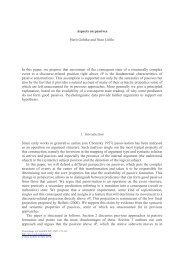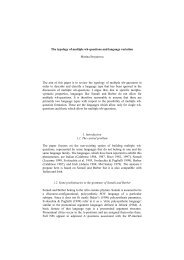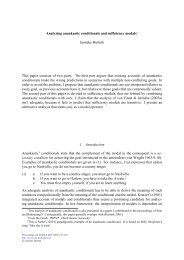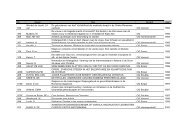Negating and Conjoining Imperatives Magdalena Schwager The ...
Negating and Conjoining Imperatives Magdalena Schwager The ...
Negating and Conjoining Imperatives Magdalena Schwager The ...
Create successful ePaper yourself
Turn your PDF publications into a flip-book with our unique Google optimized e-Paper software.
<strong>Negating</strong> <strong>and</strong> <strong>Conjoining</strong> <strong>Imperatives</strong> 97<br />
with an explanation for the strikingly parallel non-Boolean cases in the realm of<br />
declarative sentences.<br />
I therefore conclude that Merin’s proposal is unattractive for at least three reasons:<br />
(i) it crucially relies on the postulation of differences between the semantic<br />
algebras of German <strong>and</strong> English, (ii) the lexical semantic interpretation of German<br />
negation has to vary according to two parameters, namely +/- language of desire,<br />
+/- sentence-initial, <strong>and</strong> (iii) an independent explanation for the non-Boolean readings<br />
in declarative contexts still needs to be found.<br />
Instead, I want to make use of the fact that the interpretation of German nicht<br />
‘not’ ((3b) vs. (16)) varies according to morphosyntactic differences which analogously<br />
can be found between German <strong>and</strong> English imperative conjunctions ((3a)<br />
vs (3b)).<br />
In the following, the difference between (3a) <strong>and</strong> (3b) will thus be related to<br />
differences in morphosyntactic makeup, not to differences in the semantic algebra<br />
in imperative contexts.<br />
4. A syntactic solution<br />
As to imperatives I will rely on st<strong>and</strong>ard assumptions as elaborated for example<br />
in Wratil (2000).<br />
<strong>The</strong> imperative semantics depends on specific features which are situated in<br />
the C projection. So far, German <strong>and</strong> English differ in that overt movement of the<br />
morphologically marked imperative verb to C is triggered only in German. <strong>The</strong><br />
English verb is allowed to stay in situ. I will assume that in the positive case a<br />
∅-auxiliary is present, which has to be realized overtly in the case of emphasis or<br />
negation: 7<br />
(18) a. Stop it!<br />
b. DO stop it!<br />
c. Don’t stop it!<br />
As for the interpretation, I will assume for the sake of simplicity that imperatives<br />
denote fulfillment conditions (cf. e.g. Lohnstein 2000). Matrix tense is conceived<br />
of as deictically denoting intervals <strong>and</strong> restricting them with respect to their location<br />
with respect to utterance time (cf. von Stechow 2002) 8 .<br />
(19) || (you) P!|| is fulfilled iff [t 4 > t o & ∃ e[τ(e) ⊆ t 4 & P(ADR,e)]]<br />
where t o denotes the utterance time, t 4 is a free variable over intervals, e<br />
7 Nothing hinges on the exact technical implementation, as long as the S-structure positions of<br />
German <strong>and</strong> English imperatives with respect to negation are captured correctly. I completely abstract<br />
away from the anlysis of the IP layer as irrelevant for the present purpose, thus leaving aside e.g. the<br />
problem of the overtly missing subject.<br />
8 In that respect, morphological present, past <strong>and</strong> future behave analogously to personal pronouns<br />
(e.g. (s)he) which restrict their possible referents to being male or female respectively.


